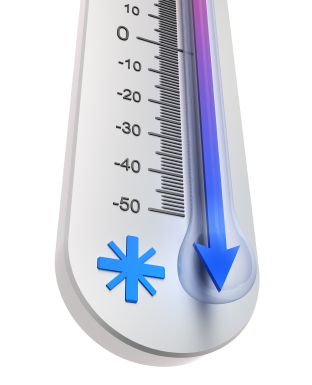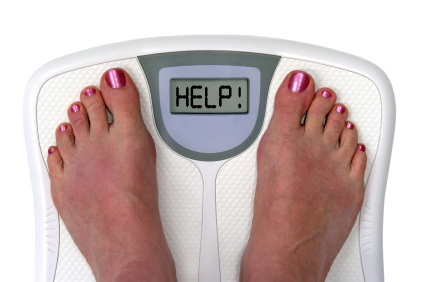 Winter in Wisconsin is synonymous with cold, and this year thanks to the “wobbly polar vortex” it has been really, really cold. I have been very grateful for my under-desk space heater at work and my toasty gas fireplace at home. However, according to an article currently in press in the journal Trends in Endocrinology and Metabolism (1), all that lovely toasty warmness might be working against me if I am hoping to loose weight.
Winter in Wisconsin is synonymous with cold, and this year thanks to the “wobbly polar vortex” it has been really, really cold. I have been very grateful for my under-desk space heater at work and my toasty gas fireplace at home. However, according to an article currently in press in the journal Trends in Endocrinology and Metabolism (1), all that lovely toasty warmness might be working against me if I am hoping to loose weight.
Excess weight is nothing more than a positive energy balance, meaning we have taken in more calories than we have burned. The deceptively simple sounding solution for losing or maintaining weight is to take in no more calories than you will be expending. Typically this is achieved by eating less, increasing physical activity or through pharmacological interventions. However, anyone who has ever tried any of these approaches knows that there is nothing simple about them, and often times the results are disappointing or short lived.
The authors of the Trends in Endocrinology and Metabolism paper hypothesize that regular exposure to mild cold could affect our energy expenditure in a positive way. We know that shivering produces heat (shivering thermogenesis) and thus expends energy. It can increase the metabolic rate to up to five times the resting rate (2). However, it is not comfortable and can make coordinated movements difficult. The authors focused on something close to this state, but not quite. Nonshivering thermogenesis (NST) is the cold-induced increase in heat production that is does not involve muscle activity like shivering. It occurs by activating brown adipose tissue (3–5).
Although there is great variation between individuals, most young and middle-aged people will see an increase in NST between a few percent to up to 30% when exposed to mildly cold conditions (1). The authors note that a recent study found a significant decrease in body fat content following a 6 week cold acclimation study (2 hours/day at 62.6°F [17°C]; 6).
 As many of us can probably attest, the downfall of undertaking anything that increases our body’s energy usage is that often we end up increasing our caloric intake to compensate for it. Interestingly, the authors point to a 2009 study (7) that found evidence that increased food intake did not fully compensate for this type of cold-induced thermogenesis.
As many of us can probably attest, the downfall of undertaking anything that increases our body’s energy usage is that often we end up increasing our caloric intake to compensate for it. Interestingly, the authors point to a 2009 study (7) that found evidence that increased food intake did not fully compensate for this type of cold-induced thermogenesis.
Personally, I love to be warm— as evidenced by my previous comments about space heaters and gas fireplaces. However, if the benefits of cold acclimation suggested by this paper hold to be true, I think I could tolerate 2 hours a day at 62°C.
References
- Van Marken Lichtenbelt. W. et al. (2014) Cold exposure—An approach to increasing energy expenditure in humans. Trends Endrochron. Met. In Press.
- Jansky, L. (1998) Shivering. In Physiology and Pathophysiology of Temperature Regulation (Blattheis, C.M. ed.) World Sceintific.
- Cannon, B. and Nedergaard, J. (2004) Brown adipose tissue: Function and physiological significance. Physiol. Rev. 84, 277–359.
- Van Marken Lichtenbelt, W.D. et al. (2009) Cold-activated brown adipose tissue in health adult men. N. Engl. J. Med. 360, 1500–1508.
- Virtanen, K.A. et al. (2009) Functional brown adipose tissue in health adults. N. Engl. J. Med. 360, 1518–1525.
- Yoneshiro, T. et al. (2013) Recruited brown adipose tissue as an antiobesity agent in humans. J. Clin. Invest. 123, 3404–3408.
- Cannon, B. and Nedergaard, J. (2009) Thermogenesis challenges the adipostat hypothesis for body-weight control. Proc. Nutr. Soc. 68, 401–407.
